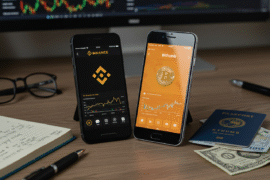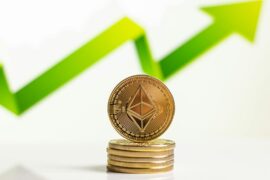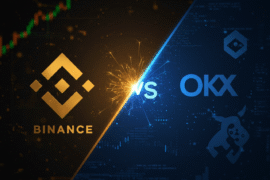This article may contain references to products or services from one or more of our advertisers or partners. We may receive compensation when you click on links to those products or services. Nonetheless, our opinions are our own.
The information presented in this article is accurate to the best of our knowledge at the time of publication. However, information is subject to change, and no guarantees are made about the continued accuracy or completeness of this content after its publication date.

Updated by Albert Fang
What is Ripple?
Banking technology seems to be moving forward at a snail’s pace compared to other fields. In an age where almost anything is just a few clicks away, money transfers still take days, and exchanging between currencies is even more of a headache. Ripple (XRP) aims to fix that by main transfers nearly instant between any currency pair. Their ultimate goal: build a fast, secure, user-friendly system that has all the benefits of a decentralized blockchain, but make it palatable to conservative financial institutions.
The centralization and direct accountability that have drawn many banks towards this technology, though, have also caused concern among the crypto community. While the technology is perfectly sound, the developers have made no secret of the fact that they are creating an enterprise-focused product. It will probably be great for banking and will make money move a lot faster, but it probably won’t live up to the stereotypical crypto ideal of a decentralized system.
How does Ripple work?
The core technology is the same as any other crypto: any transaction sent from Person A to Person B is broadcast to the network for confirmation. Computers around the world check to make sure the transaction syncs up with their copy of the ledger and validate it. Once the transaction is validated, it is added to the permanent, unchangeable copy of the ledger shared by all the nodes.
Some parts of Ripple stray from the norm, though. One of the most unique features is the lack of mining. All 100 billion XRP were mined at the very beginning, and no more will be created. This means no miners—so who will do all the work to keep the network going? Most likely, it will be major financial institutions that are actually using it.
Currently, Ripple has three main products: xCurrent, xRapid, and xVia. They all accomplish the same basic task of Bank A sending money to Bank B, but in slightly different ways.
xCurrent allows banks to send, track, and communicate about cross-border payments—though no XRP is actually used in this process. xRapid is similar, but it focuses more on enabling companies to send payments to developing economies without having to set up bank accounts full of local currency first. Essentially, money is sent, exchanged for XRP, then sold for local currency and deposited. Finally, xVia can be thought of as Ripple’s API—an easy way for a company to hook up to it. Though it has not been released yet, this seems as if it will enable any app, company, or (possibly) individual to accept and make payments on the network.
Voted "Best Overall Budgeting App" by Forbes and WSJ
Monarch Money helps you budget, track spending, set goals, and plan your financial future—all in one app.
Get 50% OFF your first year with code MONARCHVIP
How to buy Ripple at a legit cryptocurrency exchange?
The most popular and well-respected cryptocurrency exchanges are Coinbase, Binance, and Crypto. They have been in the industry since the inception of crypto. To buy the crypto you are looking for, simply register for any of the cryptocurrency marketplaces below and claim the bonus sign-up offer as well.
Recent Developments
In February 2018, Santander Group announced a major upcoming app to facilitate fast cross-border transactions using xCurrent.
Also in February, the Saudi Arabian monetary authority signed an agreement to explore using Ripple in Saudi banks.
Fun Fact
Ripple is actually older than Bitcoin. RipplePay.com, created by Ryan Fugger in 2004, was a decentralized payments system (not a blockchain) that allowed the use of “IOUs” as currency. It didn’t take off then, but it was revived as a blockchain project shortly after Bitcoin came on the scene.

Reviewed and edited by Albert Fang.
See a typo or want to suggest an edit/revision to the content? Use the contact us form to provide feedback.
At FangWallet, we value editorial integrity and open collaboration in curating quality content for readers to enjoy. Much appreciated for the assist.
Did you like our article and find it insightful? We encourage sharing the article link with family and friends to benefit as well - better yet, sharing on social media. Thank you for the support! 🍉
Article Title: How to Buy Ripple with Crypto.com Crypto Exchange
https://fangwallet.com/2018/02/28/what-is-ripple-xrp-crypto-for-dummies-ripple-potential-value/The FangWallet Promise
FangWallet is an editorially independent resource - founded on breaking down challenging financial concepts for anyone to understand since 2014. While we adhere to editorial integrity, note that this post may contain references to products from our partners.
The FangWallet promise is always to have your best interest in mind and be transparent and honest about the financial picture.
Become an Insider

Subscribe to get a free daily budget planner printable to help get your money on track!
Make passive money the right way. No spam.
Editorial Disclaimer: The editorial content on this page is not provided by any of the companies mentioned. The opinions expressed here are the author's alone.
The content of this website is for informational purposes only and does not represent investment advice, or an offer or solicitation to buy or sell any security, investment, or product. Investors are encouraged to do their own due diligence, and, if necessary, consult professional advising before making any investment decisions. Investing involves a high degree of risk, and financial losses may occur including the potential loss of principal.
Source Citation References:
+ Inspo











































